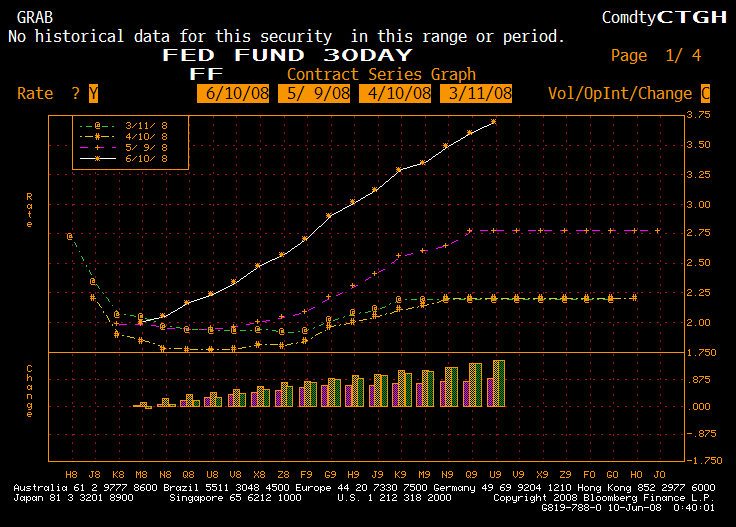From the RealMoney Columnist conversation yesterday:

 |
 |
David Merkel |
| Stealing a March; Next Comes the Pile-On |
6/5/2008 3:37 PM EDT
 |
So yesterday Moody’s places MBIA and Ambac on Negative Watch. S&P grabs the ball and downgrades them, leaving them on negative outlook. I pointed out a while ago that the dike had been breached, and it was only a matter of time until the downgrades came.
And, as I pointed out yesterday, there will be new entrants to the market. Not only will Berky be there, with Assured Guaranty and Dexia, but Macquarie Group joins the party as well.
Even if Ambac and MBIA (the holding companies) survive, the business that used to be profitable for them will be occupied by others. I’ll throw this out as my next prediction in this space: they both go into conservation, and in runoff, claimants get paid off, senior debtholders get nicked, subordinated debtholders lose a lot, and the equity is a zonk.
Position: none
One last note: the stocks rally after the downgrade. Probably short covering and other derivative-related activity, but you have to admit it is amazing for the stock to go up when the franchise gets destroyed.
Position: none
-=-=-=-=-=-=–==–==-=–=-=-==–=
Okay, after yesterday’s piece, there was a fast, opportunistic reaction by S&P. Moody’s action gave them cover to downgrade, and S&P took the ball and ran with it. Now that action gives Moody’s the cover to downgrade freely. There is no longer any reason for them to stay at Aaa. There is no money in it, and their reputation can only take further his from here. Rating agencies are like wolf packs — there is safety in the pack. Don’t be an outsider.
From one of my old RealMoney pieces (12/1/2004): Many of the conflict-of-interest problems still exist today. One more example: Could the ratings agencies downgrade MBIA (MBI:NYSE) or Ambac (ABK:NYSE) even if they wanted to? MBIA and Ambac rely on their Aaa/AAA ratings to the degree that they would have a difficult time operating without the rating. Much of the bond market relies on enhancement from MBIA and Ambac. The loss of a Aaa/AAA rating would be a jolt to the guaranteed bonds.
In addition, MBIA and Ambac structure their risks according to models provided by the ratings agencies. It is the models of the ratings agencies that tell the guarantors how much equity must stand in front of the debt that is being guaranteed. The ratings agencies are an inherent part of the business model of the financial guarantors. MBIA and Ambac can’t get along without them.
The ratings agencies derive so much income from these major financial guarantors that their own financial well-being would be affected by a downgrade. I’m not saying that either should be rated less than Aaa/AAA, but there is a cliff here, and I am wary of investing near cliffs.
Well, we came to the cliff, and S&P shoved MBIA and Ambac to the edge. Now Moody’s can push them over the edge. It should come soon. As with the rating agencies actions on the other financial guarantors, once a guarantor is pushed below AAA, the rating no longer matters as much. There are dedicated “AAA only” investors that care about this, and they will be forced sellers now, or, they will modify their investment guidelines. 🙁
Now, as I have mentioned before, stable value funds will have their difficulties here. Some have positioned themselves as “AAA only” funds, and that led to large holdings of MBIA- and Ambac-guaranteed debt. What they do now is beyond me. I suspect they try to modify their investment guidelines. 🙁
Well, at this point, we have to contemplate life without the old guarantors. They will shrink and disappear, while new guarantors, who are all currently skeptical of doing much more than Municipal bond insurance, will grow, and make it impossible for the old guarantors to return, because they are much better capitalized. Once you lose your AAA as a guarantor, you will rarely get it back.


